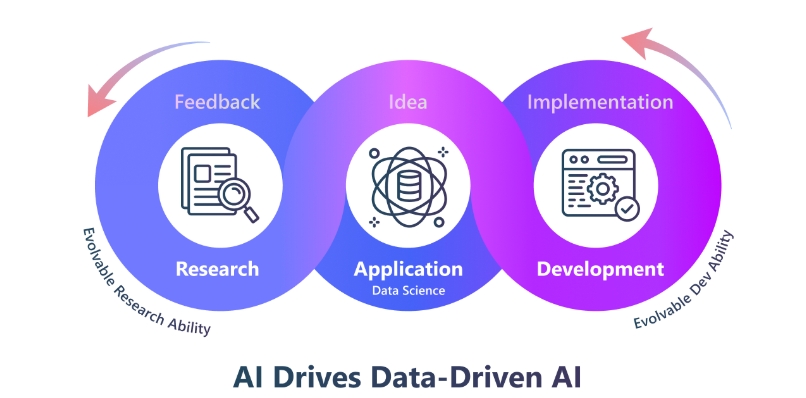RDAgent
RDAgent is a tool aimed at automating industrial R&D processes, especially data-driven R&D scenarios. By imitating the way human experts conduct research and development, it is able to:
- Reading Comprehension: Extract key information from reports, papers, and other materials, such as formulas, feature descriptions, model structures, etc.
- Code Implementation: Convert extracted information into runnable code, for example, implementing features, factors, or models.
- Iterative Optimization: Continuously improve code performance by learning from feedback and knowledge.
- Innovative Ideas: Propose new R&D ideas based on existing knowledge and observations.
The core idea of RDAgent is to establish an "R&D loop," where "R" (Research) represents proposing new ideas, and "D" (Development) represents implementing these ideas. Through automated R&D loops, RDAgent can help users explore and validate new data science methods more efficiently.
Main Features of RDAgent:
- Data-Driven: Focuses on data-driven R&D processes, making full use of data to drive innovation.
- Automation: Automates key aspects of the R&D process, such as feature engineering, model building, and experimental validation.
- Scalability: Easily integrates new methods and technologies to adapt to different R&D needs.
- Modularity: The framework design is clear, easy to customize and extend.
- Collaboration: Designed to support human-computer collaboration, it can serve as an intelligent assistant for R&D personnel.
Usage Scenarios of RDAgent:
RDAgent is suitable for various data-driven R&D scenarios, especially in the following areas:
-
Quantitative Trading (Automatic Quant Factory):
- Automatically generate quantitative factors (factor).
- Automatically build and optimize quantitative models (model).
-
Data Mining (Data Mining Agent):
- Iteratively propose new data and models.
- Improve model performance by learning from data.
-
Research Assistant (Research Copilot):
- Automatically read research papers and financial reports.
- Extract model structures and dataset construction methods.
-
Kaggle Competition (Kaggle Agent):
- Automatically adjust model parameters.
- Automatically perform feature engineering to achieve better results in competitions.
-
Medical Model Development (Medical Prediction Model Evolution):
- Automatically optimize medical prediction models.
How to Use RDAgent?
The documentation provides detailed quick-start guides, including:
- Install Docker: RDAgent relies on Docker to run certain components, so Docker needs to be installed first.
- Create Conda Environment: It is recommended to create a new Conda environment to install RDAgent and its dependencies.
- Install RDAgent: Use the pip command to install the RDAgent package.
- Configure API Keys: Configure corresponding API keys and model parameters according to the API service used (e.g., OpenAI or Azure OpenAI).
- Run Examples: Use the
rdagentcommand to run predefined examples, such asrdagent fin_factor(quantitative factor),rdagent fin_model(quantitative model),rdagent med_model(medical model), etc. - Monitor Results: Use the
rdagent uicommand to launch the user interface to view running logs and results.
Summary:
RDAgent is a powerful automated R&D tool that helps data scientists and R&D personnel conduct data-driven innovations more efficiently. It has a wide range of application scenarios and provides easy-to-use interfaces and examples. Through automated R&D loops, RDAgent can accelerate the exploration and validation of new methods and technologies, thereby driving innovation.

